Bently Nevada 991-01-XX-01-00 Thrust Transmitter
Product Description
The Bently Nevada 991-01-XX-01-00 is a thrust transmitter designed to provide a reliable and accurate measurement of axial displacement (thrust) in machinery. This device is especially tailored for original equipment manufacturers (OEMs) of centrifugal air compressors, small pumps, motors, or fans. It simplifies the machinery control system by offering a straightforward 4 – 20 mA proportional axial displacement signal as input.
The transmitter is a 2 – wire, loop – powered device, which enhances its ease of integration into industrial automation systems. It accepts input from the 3300 nsv proximity probe and its matching extension cable. Once the input is received, the transmitter conditions the signal into appropriate engineering units proportional to the shaft’s axial position and outputs it as a 4 – 20 mA industry – standard signal. This output can then be used for machinery protection, alarming, and logic within the control system. Additionally, it comes equipped with a not ok / signal defeat circuit. This circuit is crucial as it prevents high outputs or false alarms that could occur due to a faulty proximity probe or a loose connection.
Product Parameters
|
Parameter
|
Specification
|
|
Product Type
|
Thrust Transmitter
|
|
Manufacturer
|
Bently Nevada
|
|
Weight
|
2300 g
|
|
Input
|
Accepts 1 non – contacting 3300 nsv proximity probe and extension cable
|
|
Power Requirements
|
+12 to +35 VDC input at the transmitter terminal
|
|
Signal Output
|
4 to 20 mA DC over the specified full – scale range in a 2 – wire configuration
|
|
Accuracy
|
± 1.5% over the full – scale range (typical). Rated from the test signal input to the voltage measured across a 250 ω loop resistance
|
|
Maximum Loop Resistance
|
1,000 ω, including cable, at 35 VDC
|
|
Current Limiting
|
23 mA (typical)
|
|
Zero and Span
|
Non – interacting external adjustments for fine – tuning
|
|
Signal Features
|
Signal output drops below 3.6 mA within 100 µs after a not ok condition occurs and restores within 0.1 seconds after the issue is resolved
|
|
Proximitor Sensor Output
|
Compatible with ungrounded, portable test equipment. For grounded, AC – powered test equipment, use the 122115 – 01 test adapter for isolation
|
|
Output Impedance
|
10 k ω for a 10 m ω load
|
|
Linear Range
|
0.25 to 1.65 mm (10 to 65 mils) for Prox out. Suitable for 0.6 – 0.6 mm or 25 – 0 – 25 mils current loop linear ranges
|
|
Incremental Scale Factor
|
7.87 mv / µm (200 mv / mil) with ± 6.5% typical interchangeability errors
|
|
Temperature Stability
|
Incremental scale factor remains within ± 10% from 0 °C to + 70 °C (+ 32 °F to + 158 °F)
|
|
Transmitter Operating Temperature
|
– 35 °C to + 85 °C (- 31 °F to + 185 °F)
|
|
Storage Temperature
|
– 51 °C to + 100 °C (- 60 °F to + 212 °F)
|
|
Probe Operating Temperature
|
– 52 °C to + 177 °C (- 62 °F to + 351 °F)
|
|
Minimum Target Size
|
9.5 mm (0.375 in) diameter
|
|
Power Consumption
|
5.45 watts typical
|
|
Humidity
|
95%, non – condensing
|
|
Dimension
|
7.3 cm x 5 cm x 10 cm
|
Product Specifications
- Physical Dimensions: With dimensions of 7.3 cm in length, 5 cm in width, and 10 cm in height, the 991-01-XX-01-00 has a compact design. This compact size makes it suitable for installation in areas with limited space, such as in the tight confines of centrifugal air compressors.
- Weight: At 2300 g, it is lightweight enough to be easily handled during installation and maintenance, yet robustly constructed to withstand the rigors of industrial environments.
- Mounting Options: It offers flexibility in mounting with the choice of DIN – rail clips or bulkhead mounting screws as standard options. This allows for easy integration into different types of machinery enclosures or control panels.
- Electrical Characteristics: Operating within a power input range of +12 to +35 VDC, it is compatible with a wide range of industrial power sources. The 4 – 20 mA output signal is a standard in the industry, enabling seamless connection with various control systems. The accuracy of ± 1.5% over the full – scale range ensures reliable measurement of axial displacement.
- Environmental Tolerance: The transmitter can operate in a temperature range from – 35 °C to + 85 °C and withstand humidity levels up to 95% non – condensing. This wide environmental tolerance makes it suitable for use in diverse industrial settings, from cold storage facilities to hot and humid manufacturing plants. It also has a storage temperature range of – 51 °C to + 100 °C, ensuring its durability during periods of non – use.
Series
The 991-01-XX-01-00 is part of Bently Nevada’s line of machinery monitoring and protection products. While not specifically part of a numbered series like the 3500 series, it complements these systems by providing critical thrust measurement capabilities. Bently Nevada is globally recognized for its high – quality products in the field of machinery condition monitoring. Their product range includes a variety of sensors, transmitters, and monitoring systems that are designed to work together to ensure the reliable operation of industrial machinery. The 991-01-XX-01-00, with its focus on thrust measurement, fits into this ecosystem by providing accurate data that can be used in conjunction with other monitoring parameters to comprehensively assess the health of machinery.
Features
Simple Integration
It works seamlessly with Bently Nevada’s 3300 nsv proximity probe, eliminating the need for additional external signal conditioning units. This integration simplifies the overall system design and reduces the potential for signal interference.
Diagnostic Output
The transmitter provides dynamic vibration and gap voltage signals (Prox out, com terminals, and coaxial connector). These diagnostic outputs are valuable for troubleshooting machinery issues, allowing technicians to quickly identify problems related to shaft position and vibration.
Easy Calibration
Featuring non – interacting zero and span adjustments, calibration of the transmitter is straightforward. This allows for precise tuning of the device to match the specific requirements of the monitored machinery.
Reliable Operation
It includes a test input, power – up inhibit circuit, and fault detection features. These features ensure accurate readings by protecting against electrical malfunctions and ensuring proper startup procedures. The not ok / signal defeat circuit, as mentioned earlier, further enhances the reliability by preventing false alarms.
Flexible Mounting
The availability of DIN rail clips or bulkhead screws for mounting provides versatility in installation. It can be easily installed in different types of industrial setups, whether in a control cabinet on a DIN rail or directly on a bulkhead in a machinery enclosure.
Function
The main function of the 991-01-XX-01-00 thrust transmitter is to convert the raw signal from the 3300 nsv proximity probe into a standardized 4 – 20 mA signal that represents the axial displacement (thrust) of the machinery’s shaft. It first receives the input from the proximity probe, which detects the position of the shaft relative to a reference point. The transmitter then processes this signal, conditioning it into engineering units proportional to the shaft’s axial position. This processed signal is then output as a 4 – 20 mA signal, which can be easily understood and used by the machinery control system.
The not ok / signal defeat circuit continuously monitors the integrity of the input signal. If it detects a faulty proximity probe or a loose connection, it immediately drops the signal output below 3.6 mA within 100 µs. Once the issue is resolved, the output signal restores within 0.1 seconds. This ensures that the control system receives accurate and reliable information about the shaft’s thrust at all times.
Use
In industrial applications, technicians first install the 3300 nsv proximity probe at the appropriate location on the machinery, typically near the shaft where axial displacement needs to be measured. The proximity probe is then connected to the 991-01-XX-01-00 thrust transmitter using the matching extension cable. The transmitter is mounted either using the DIN – rail clips in a control cabinet or the bulkhead mounting screws directly on the machinery enclosure, depending on the installation requirements.
The power supply, within the range of +12 to +35 VDC, is connected to the transmitter. Technicians then calibrate the transmitter using the non – interacting zero and span adjustments to match the specific full – scale range of the machinery’s axial displacement. Once calibrated, the transmitter starts receiving and processing the signal from the proximity probe. The 4 – 20 mA output signal is then connected to the machinery control system, where it can be used for various purposes such as machinery protection, alarming when the thrust exceeds certain limits, and for overall machinery health monitoring. Regular checks of the transmitter’s operation, including verifying the diagnostic outputs and ensuring proper signal levels, are carried out to maintain accurate and reliable performance.
Application Fields
Centrifugal Air Compressors
In the operation of centrifugal air compressors, monitoring the axial displacement of the shaft is crucial. The 991-01-XX-01-00 thrust transmitter provides accurate measurements of thrust, allowing operators to detect any abnormal shaft movement. This helps in preventing issues such as bearing wear, seal failures, and compressor inefficiencies. By continuously monitoring the thrust, maintenance can be scheduled proactively, reducing the risk of unexpected breakdowns and costly repairs.
Small Pumps
For small pumps used in various industrial processes, the thrust transmitter ensures the proper operation of the pump shaft. Axial displacement in pumps can lead to problems like impeller damage, misalignment, and reduced pumping efficiency. The 991-01-XX-01-00 measures the thrust and provides real – time data to the control system, enabling operators to take corrective actions promptly. This is especially important in applications where the pump is part of a critical process, such as in chemical processing or water treatment plants.
Motors
In electric motors, excessive axial thrust can cause premature bearing failure and affect the overall performance of the motor. The 991-01-XX-01-00 thrust transmitter monitors the axial displacement of the motor shaft, providing valuable information for motor protection and maintenance. By detecting early signs of abnormal thrust, operators can adjust the motor’s operating conditions or perform maintenance tasks to prevent motor failures. This is particularly relevant in high – power motors used in industrial applications where downtime can have a significant impact on production.
Fans
In industrial fans, the shaft’s axial displacement can affect the balance and performance of the fan blades. The 991-01-XX-01-00 thrust transmitter measures the thrust and provides a 4 – 20 mA signal that can be used to monitor the fan’s health. This helps in preventing issues such as blade vibrations, uneven air flow, and increased energy consumption. By ensuring the proper operation of fans, industries can maintain efficient ventilation systems in areas such as manufacturing plants, warehouses, and power generation facilities.
In conclusion, the Bently Nevada 991-01-XX-01-00 thrust transmitter is a reliable and versatile device for measuring axial displacement in various types of machinery. Its features, such as simple integration, easy calibration, and reliable operation, make it a valuable tool for OEMs and industrial operators alike. By providing accurate thrust measurement data, it plays a crucial role in ensuring the efficient and reliable operation of industrial machinery across multiple applications.



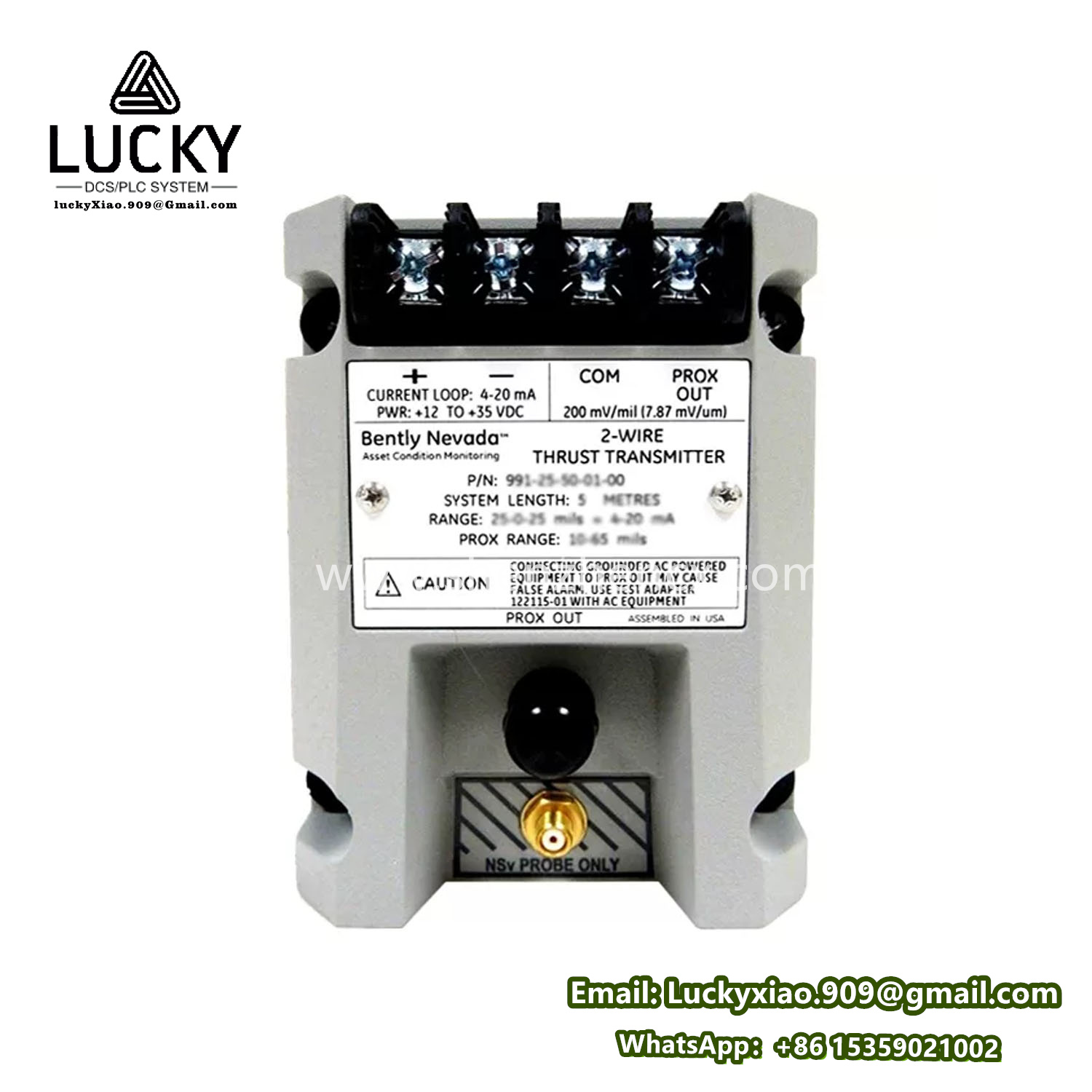


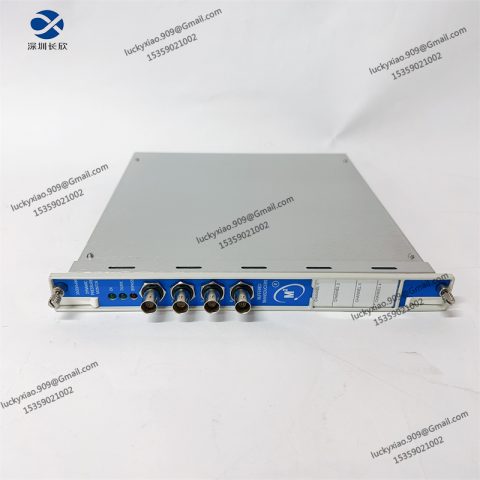
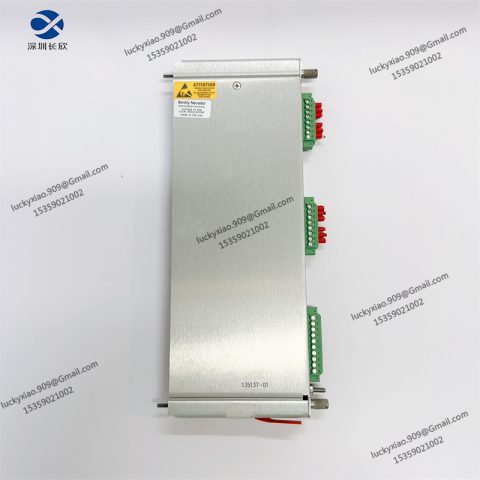

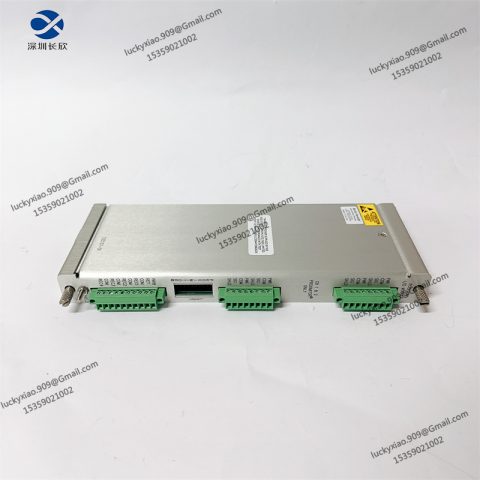
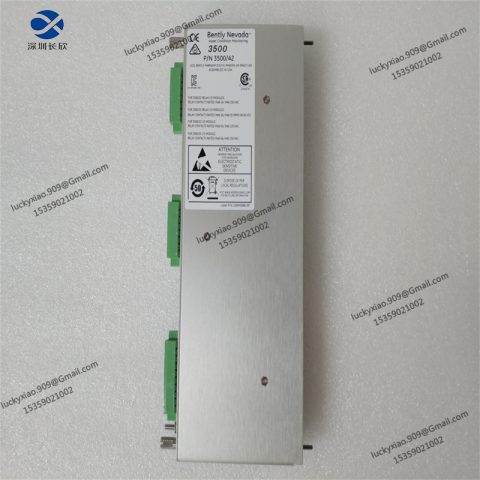

There are no reviews yet.